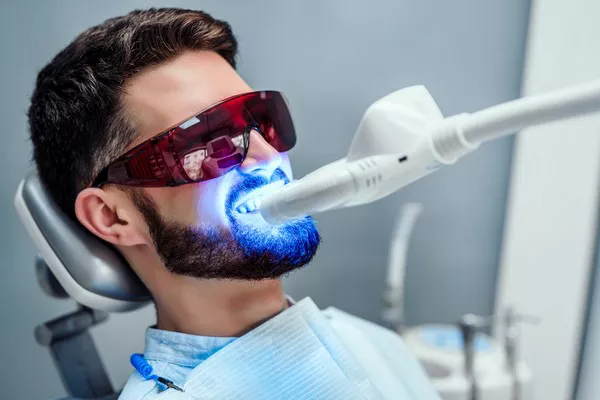If you’re considering ways to enhance the brightness of your smile, you might be asking: how well do whitening strips work? Whitening strips are a popular over-the-counter option for achieving a whiter smile, but their effectiveness can vary. In this article, we’ll delve deeply into how whitening strips function, their effectiveness, and various factors that influence their performance. We’ll also compare them with other whitening methods and discuss the potential side effects and safety considerations.
What Are Whitening Strips?
Definition and Composition
Whitening strips are thin, flexible plastic strips coated with a whitening gel. This gel contains active ingredients such as hydrogen peroxide or carbamide peroxide, which are designed to bleach the teeth and reduce stains. The strips are designed to adhere to the teeth and deliver the whitening agent directly onto the enamel.
How They Work
When you apply whitening strips to your teeth, the gel on the strips releases the whitening agents. These agents penetrate the enamel and break down the compounds causing discoloration. Over time, this process helps lighten the teeth and improve their overall appearance. The effectiveness of the whitening strips depends on several factors, including the concentration of the whitening agents and the duration of use.
Types of Whitening Strips
Over-the-Counter (OTC) Strips
Over-the-counter whitening strips are widely available and can be purchased without a prescription. They are typically designed for individuals with mild to moderate staining. OTC strips vary in strength and effectiveness, so choosing a product that suits your needs is essential.
Professional Whitening Strips
Professional whitening strips are available through dental professionals. These strips often contain higher concentrations of bleaching agents compared to OTC options. As a result, they can deliver more significant whitening results in a shorter time. Professional strips are generally more expensive but may be worth considering for more noticeable or faster results.
Effectiveness of Whitening Strips
Immediate Results
Many users notice some whitening effects after just a few applications of whitening strips. However, for optimal results, it generally takes a few weeks of consistent use. The immediate results can vary based on factors such as the severity of staining and the type of whitening strips used.
Long-Term Results
For long-lasting whitening, it’s important to follow the usage instructions and maintain good oral hygiene. Results from whitening strips can last several months, but factors such as diet and oral care will influence how long the effects persist. Periodic touch-ups may be needed to keep your teeth looking their best.
Factors Affecting Whitening Strip Effectiveness
Type of Stains
The type of stains on your teeth plays a crucial role in how well whitening strips work. Whitening strips are typically more effective on extrinsic stains, which are surface stains caused by food, drinks, and smoking. Intrinsic stains, which are deeper and caused by factors like medications or trauma, might require more intensive treatments.
Tooth Sensitivity
Tooth sensitivity is a common concern with whitening products. If you have sensitive teeth, using whitening strips can sometimes exacerbate the issue. Many whitening strips are designed for sensitive teeth, but it’s still important to choose the right product and follow the instructions carefully. If sensitivity persists, consult with your dentist for advice on alternative treatments.
Adherence to Instructions
Following the manufacturer’s instructions is essential for achieving the best results with whitening strips. Overusing the strips or applying them incorrectly can lead to uneven whitening or increased tooth sensitivity. Make sure to adhere to the recommended application times and frequency for optimal results.
Comparison to Other Whitening Methods
Professional Whitening Treatments
Professional whitening treatments, such as in-office bleaching, often provide faster and more dramatic results compared to whitening strips. These treatments use stronger bleaching agents and may involve a single visit to the dentist. While more expensive, professional treatments can be a good option for those seeking significant whitening quickly.
At-Home Whitening Kits
At-home whitening kits typically include custom trays and a bleaching gel. These kits can offer a more tailored approach compared to whitening strips and may be more effective for some users. The higher concentration of bleaching agents in these kits can provide better coverage and potentially faster results.
Natural Whitening Methods
Natural whitening methods, like using baking soda or activated charcoal, are often considered less abrasive and more affordable. However, these methods may not provide the same level of whitening as strips or professional treatments. Natural methods are less regulated and might not effectively remove deep stains.
See Also: Does Light Whitening Work?
Safety and Side Effects
Common Side Effects
While whitening strips are generally safe when used as directed, some users may experience side effects such as tooth sensitivity or gum irritation. These effects are usually temporary and resolve after discontinuing use or switching to a milder product. It’s important to monitor your reaction to the strips and consult a dentist if you experience significant discomfort.
Preventing Side Effects
To minimize the risk of side effects, choose a whitening product that matches your dental needs and follow the instructions closely. If you have sensitive teeth or gums, opt for strips designed specifically for sensitive teeth. Taking breaks between whitening sessions and using fluoride toothpaste can also help reduce sensitivity.
Maintaining Results
Oral Hygiene
Maintaining good oral hygiene is crucial for preserving the whiteness achieved with whitening strips. Regular brushing and flossing help remove plaque and prevent new stains from forming. Using a whitening toothpaste can also assist in maintaining your smile’s brightness.
Diet and Lifestyle
Avoiding stain-causing foods and drinks, such as coffee, tea, and red wine, can help prolong the results of whitening strips. Smoking and tobacco use can contribute to staining, so quitting these habits can enhance and extend the effects of your whitening treatment.
Touch-Ups
To keep your teeth looking their best, consider periodic touch-ups with whitening strips. The frequency of touch-ups will depend on your individual needs and the results achieved. Following the recommended usage guidelines and maintaining good oral care can help keep your smile bright.
Conclusion
In summary, whitening strips can be a convenient and effective option for brightening your smile. They work by applying a whitening gel to your teeth, which gradually removes stains and lightens the teeth. While they may not offer the same level of whitening as professional treatments, they are a cost-effective and accessible solution for many people. Understanding how well whitening strips work, their benefits, and their limitations will help you make an informed decision about the best whitening method for your needs.
FAQs
1. How long does it take to see results with whitening strips?
You may start to notice some whitening after just a few uses of whitening strips, but optimal results typically take a few weeks of consistent application. The exact time frame can vary depending on the severity of your teeth stains and the specific product you are using. Most whitening strips recommend a usage period of around 10-30 minutes per day for 1-2 weeks. For the best results, follow the instructions provided by the manufacturer and be patient. If you do not see improvement within the recommended time frame, consider consulting with a dental professional for further advice. They can help determine if the product is suitable for your needs or if another treatment might be more effective.
2. Are whitening strips safe for teeth and gums?
Whitening strips are generally considered safe for most people when used as directed. However, some users may experience temporary tooth sensitivity or gum irritation, especially if they have pre-existing dental issues. It’s important to follow the instructions carefully and avoid overusing the strips to minimize these risks. If you experience significant discomfort, discontinue use and consult your dentist. They can provide guidance on alternative products or treatments better suited to your dental health. Regular dental check-ups can also help ensure that your teeth and gums remain healthy during and after the whitening process.
3. Can whitening strips damage enamel?
When used properly, whitening strips are unlikely to cause significant damage to your tooth enamel. The whitening agents in the strips are designed to be effective while being safe for enamel. However, overuse or improper application can lead to enamel erosion or increased tooth sensitivity. To prevent potential damage, adhere strictly to the recommended usage guidelines provided by the manufacturer. If you have concerns about the health of your enamel or experience unusual symptoms, consult your dentist. They can assess your oral health and offer personalized advice to ensure that your whitening regimen does not harm your enamel.
4. How long do the results from whitening strips last?
The results from whitening strips can last several months, depending on your oral hygiene habits and lifestyle choices. To maintain the whiteness of your teeth, it’s important to practice good oral hygiene, such as brushing and flossing regularly. Additionally, avoiding stain-causing foods and drinks, such as coffee and red wine, can help prolong the effects. Some people may need periodic touch-ups with whitening strips to keep their smile bright. Regular visits to your dentist can also help monitor the health of your teeth and the longevity of your whitening results. They can provide additional recommendations for maintaining your smile’s brightness.
5. Can I use whitening strips if I have dental work like crowns or veneers?
Whitening strips are not effective on dental work such as crowns, veneers, or fillings, as these materials do not respond to the whitening agents. The strips will only whiten natural tooth enamel, so any existing dental work will remain its original color. If you have dental restorations and are looking to improve the appearance of your smile, consult with your dentist about the best approach. They may recommend alternative whitening treatments or adjustments to your dental work to achieve a more uniform appearance. It’s important to discuss your whitening goals with your dentist to ensure that any treatments align with your overall dental care plan.
You Might Be Interested In
































